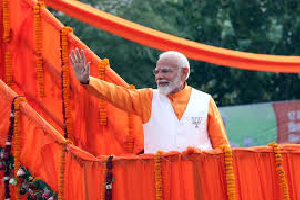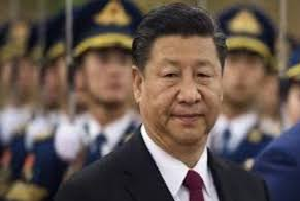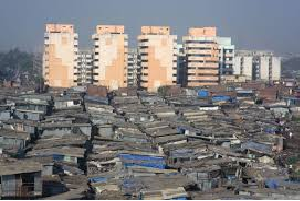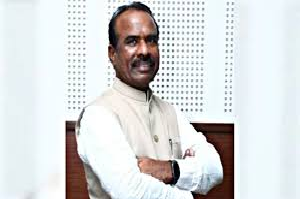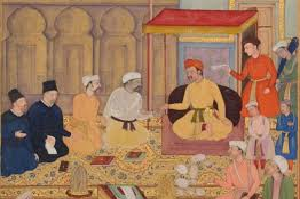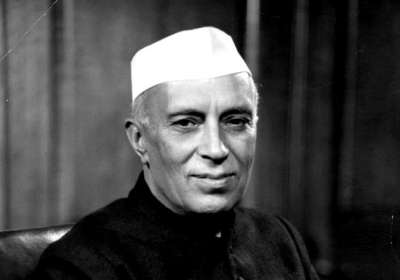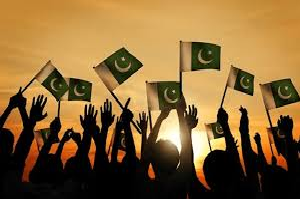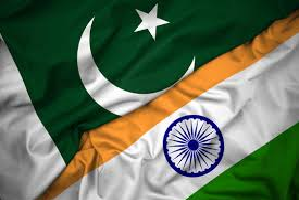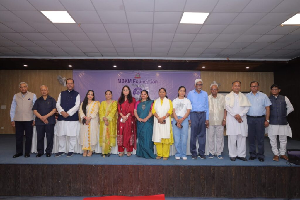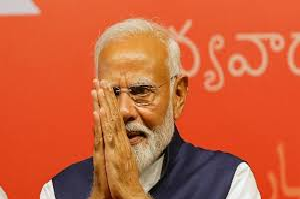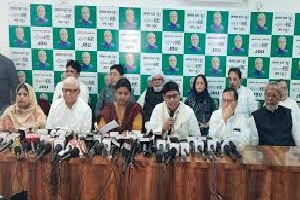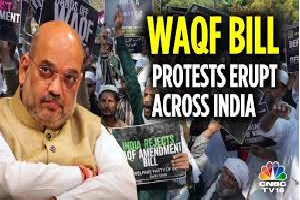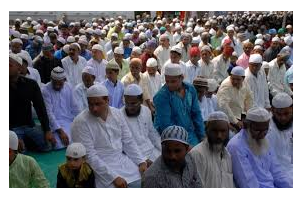1

Rajeev Mathur
New Delhi | Thursday | 1 August 2024
The GDP of India has been growing by more than 8 per cent per annum. The economy of India has transitioned from a mixed planned economy to a mixed middle-income developing social market economy with notable public sector in strategic sectors. It is the world's fifth-largest economy by nominal GDP and the third-largest by purchasing power parity (PPP); Nearly 70% of India's GDP is driven by domestic consumption; the country remains the world's fourth-largest consumer market. Apart from private consumption, India's GDP is also fuelled by government spending, investments, and exports.
The service sector makes up more than 50% of GDP and remains the fastest growing sector, while the industrial sector and the agricultural sector employ a majority of the labour force. India is the world's sixth-largest manufacturer, representing 2.6% of global manufacturing output Nearly 65% of India's population is rural and contributes about 50% of India's GDP
Urbanisation
India is urbanizing rapidly. By 2036, its towns and cities will be home to 600 million people, or 40 per cent of the population, up from 31 per cent in 2011, with urban areas contributing almost 70 per cent to GDP.
This urban transformation would have to be managed well to ensure India becomes a developed country by 2047, which would be the 100th year of our independence. Building the necessary infrastructure will be key to creating liveable, climate-resilient, and inclusive cities that would drive the economy forward.
Since nearly 70 per cent of the urban infrastructure needed by 2047 is yet to be planned and built, sizeable investments will be required. It is projected that by 2036, India will need to invest $840 billion in infrastructure - an average of $55 billion or 1.2 per cent of GDP per annum.
Energy needs of India
India is a major force in the global energy economy. Energy requirements are projected to grow by 8 or more per cent per annum.
Energy consumption has more than doubled since 2000, propelled upwards by a growing population – now the world’s largest – and a period of rapid economic growth. Near-universal household access to electricity was achieved in 2019, meaning that over 900 million citizens have gained an electrical connection in less than two decades.
India’s continued industrialisation and urbanisation will make huge demands on its energy sector and its policymakers. Energy use on a per capita basis is well under half the global average, and there are widespread differences in energy use and the quality of service across states and between rural and urban areas. The affordability and reliability of energy supply are key concerns for India’s consumers.
While, India has committed to net zero emission targets by 2070 at the same time, according to the IEA (India Energy Outlook 2021), primary energy demand is expected to nearly double to 1,123 million tonnes of oil equivalent, as India's gross domestic product (GDP) is expected to increase to US$ 8.6 trillion by 2040.
Over 80%of India’s energy needs today are met by three fuels: coal, oil, and solid biomass. Coal has underpinned the expansion of electricity generation and industry, and remains the largest single fuel in the energy mix. Oil consumption and imports have grown rapidly on account of rising vehicle ownership and road transport use. Biomass, primarily fuelwood, makes up a declining share of the energy mix but is still widely used as a cooking fuel. Despite recent initiatives to expand coverage of LPG in rural areas, over 660 million Indians have not fully switched to modern, clean cooking fuels or technologies.
India is the third-largest global emitter of CO2, despite low per capita CO2 emissions. The carbon intensity of its power sector in particular is well above the global average. Additionally, particulate matter emissions are a major factor in air pollution, which has emerged as one of India’s most sensitive social and environmental issues: in 2019, for which the data is available, there were well over one million premature deaths related to ambient and household air pollution.
Sooner than later more and more use of clean fuels will be imperative. Cleaner hydrocarbons like Natural gas and other modern renewable sources of energy viz. solar, wind, hydrogen etc. have now started to gain ground. Natural Gas consumption is forecast to increase at a CAGR of 12.2% to 550 MMSCMD by 2030 from 174 MMSCMD in 2021.
At the same time, Indian oil refiners would add 56 million tonnes per annum (MTPA) by 2028 to increase domestic capacity to 310 MTPA. India is planning to double its oil refining capacity to 450-500 million tonnes by 2030.
Among the renewable sources of energy, the rise of solar PV has been spectacular; the resource potential is huge, ambitions are high, and policy support and technology cost reductions have quickly made it the cheapest option for new power generation.
Going forward, the Energy demand of India is anticipated to grow faster than the energy demand of all major economies globally on the back of continuous robust economic growth. Moreover, the country’s share in global primary energy consumption is projected to increase two-fold by 2035.
Economic Growth & Sustainability
The balance between economic growth and sustainability is challenging from India’s standpoint. India is highly dependent on coal to meet its energy needs, being a national resource, and coal consumption will continue to grow for years. However, renewable investments have also gone up in recent times, particularly on the PV side. The country also aims to push for nuclear energy in future.
South Asia is among the most vulnerable regions to climate change and India is already faced with unprecedented heat waves and floods.
Although India is part of the world’s efforts towards emission reduction and is doing its bit, however, its contribution to limiting global emissions would need to go up considerably in coming years.
The Govt. of India has recently spelt out some quantified policies that have been committed to a net zero target by 2070.
All in all, India is a massive market for low-carbon technologies and innovation in the coming years. Fed by large and qualified manpower and hi-tech industries, it is expected to attract a sharply growing amount of FDIs. The potential for India to become a massive green hub is enormous and offers a wide range of growth opportunities.
India is still at an early stage of energy transition despite the recent push for renewables and energy efficiency improvements. Electrification in the transport sector and a rapid decline in the carbon intensity of industries will be key catalysers of the country’s decarbonisation.
India, as a growing economy, will have to balance its growth with the need to manage climate change and the country’s willingness and ability to adapt rapidly to cleaner energy resources. However, what appears eminent in the coming years, is that the opportunities on the energy front are unique and enormous in India.
---------------
About the author :
A Mechanical Engineer by profession, Rajeev Mathur is a former Executive Director of public sector giant GAIL. An internationally-known energy expert, he now works as a consultant and runs the MBKM Foundation , a voluntary social service organisation working for the weaker sections of society. Recently Co-authored a book called “The world of LNG”.








